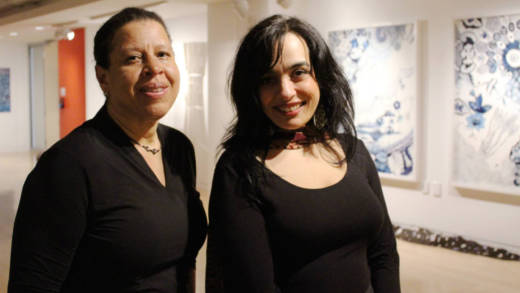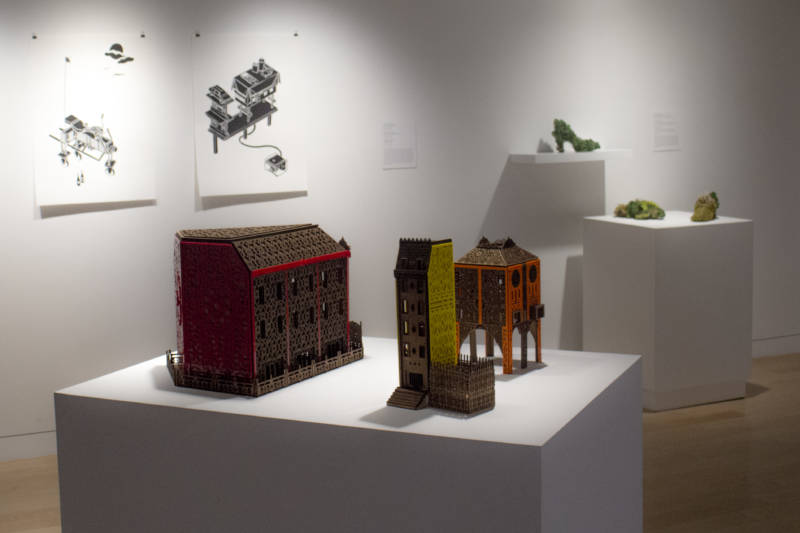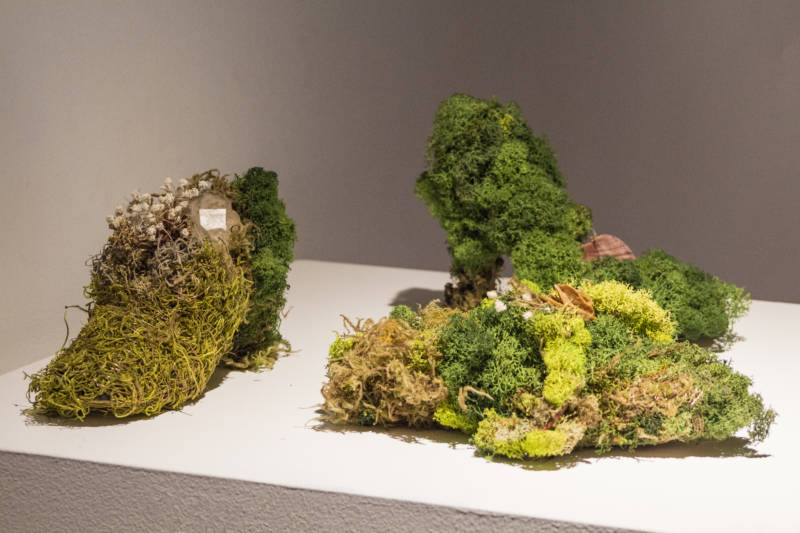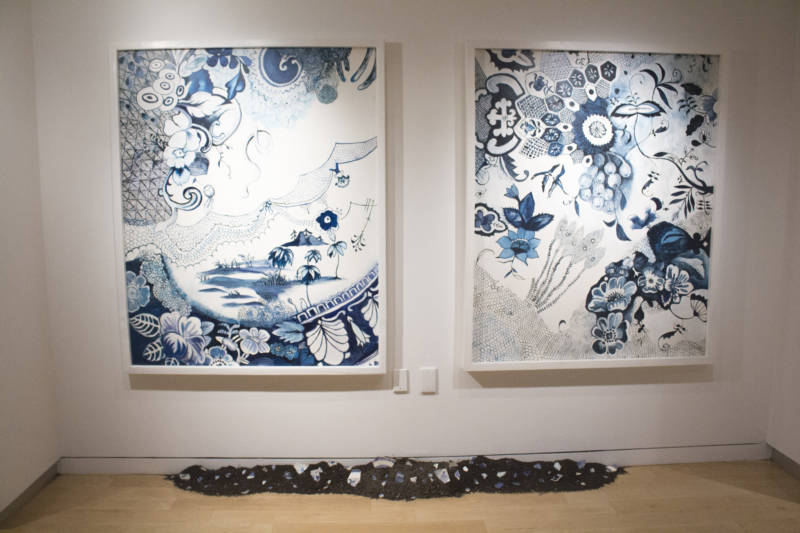Said out loud, Where Is Here rolls off the tongue softly. When devoid of punctuation, the phrase is neither a question nor a firm statement.
Is “here” a seemingly straightforward location? Is “where,” used most often when lost or uncertain, instead accessible and knowable? What exists between the certainty and mystery both words might contain?
Questions like these spurred Bay Area curators Jacqueline Francis and Kathy Zarur when they began discussing the possibility of an exhibition dedicated to “place” and “space” over six years ago. Where Is Here, on view through April 2 at the Museum of African Diaspora (MoAD) in San Francisco, doesn’t promise answers. Like its title, the exhibition is open-ended and exploratory, featuring works by 10 contemporary artists of African descent.
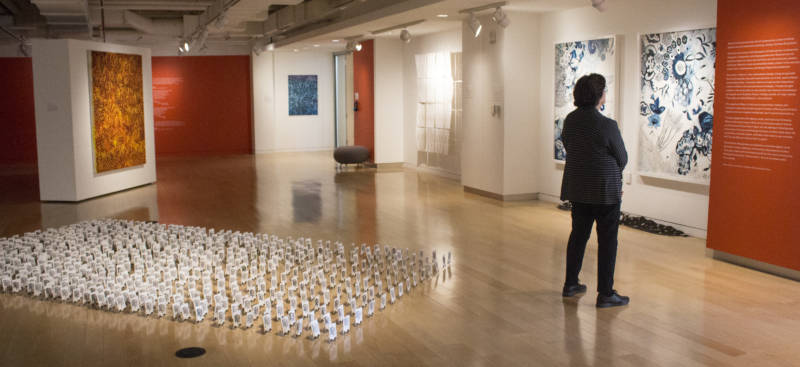
Where Is Here is a truly multidisciplinary showcase, as diverse in media as it is in thematic approaches to the questions posed. It’s rare to find a group exhibition that coheres with such vibrancy.
I spoke with the curators on site at the museum in late December. They described the exhibition’s trajectory as though it were a living thing, one that evolved with each studio visit, changed during the installation process, and productively affected their public programming. Although curating always means more than choosing and arranging artworks in a space, these co-curators extended the exhibition’s reach beyond the walls of the museum.
Curating beyond the walls
The exhibition intentionally includes both local and global artists, reflecting the specificity of the San Francisco Bay Area as well as MoAD’s international focus. The artworks include virtual reality, abstract paintings, photographs, prose, and, most unexpectedly, song tracks from Broun Fellinis, a San Francisco jazz group founded in the 1990s.
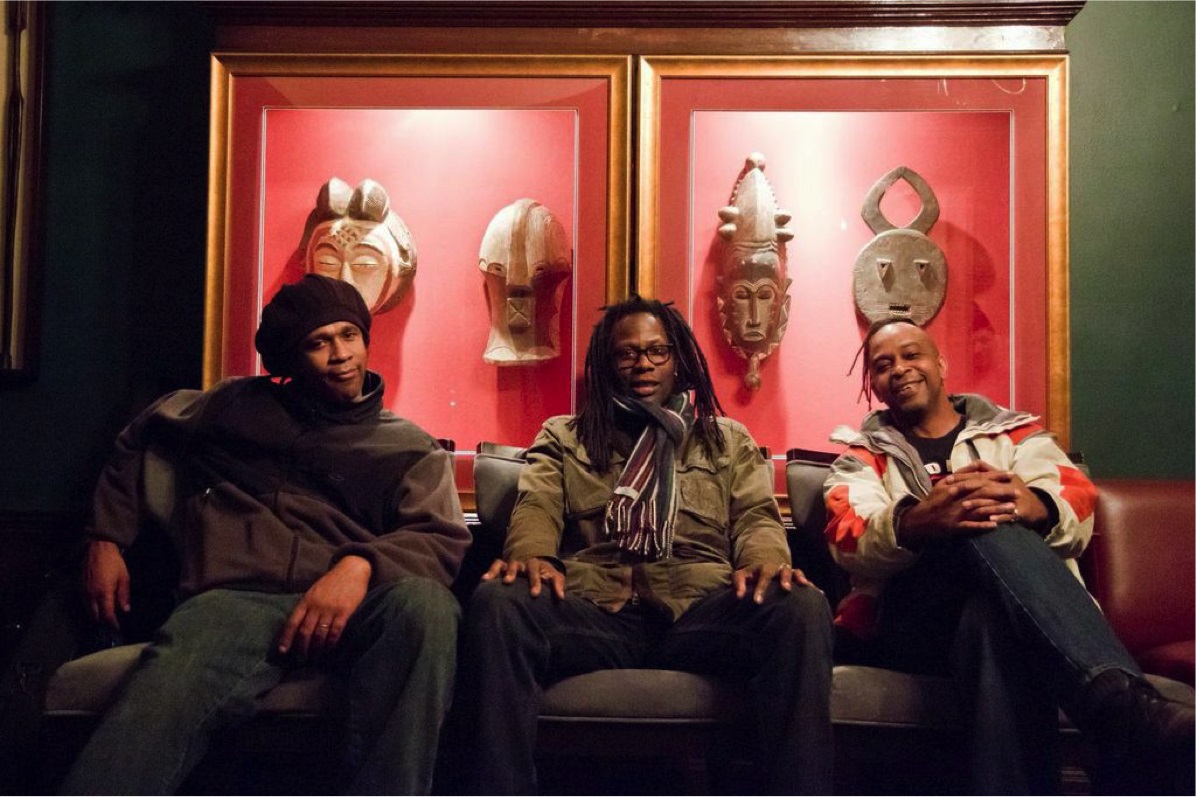
Where Is Here joins in conversation with a concurrent nearby show, Root Division’s Call for Beauty, an exhibition exploring “alternatives to the ugliness” of present-day politics from Black artistic perspectives. Linking the two shows are performances by Broun Fellinis — Feb. 11 at Root Division and March 2 at MoAD.
